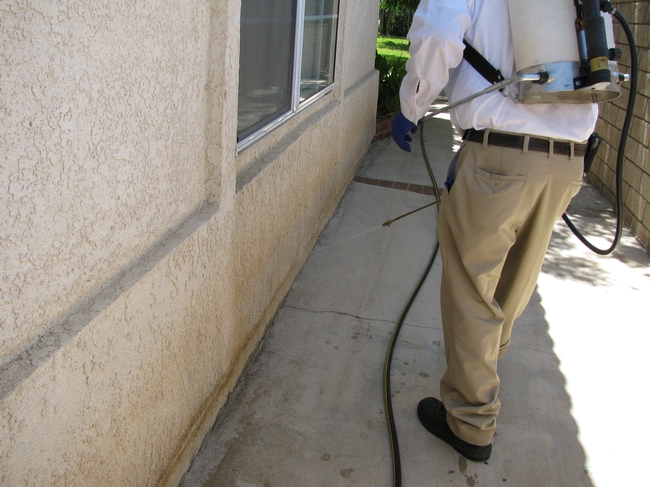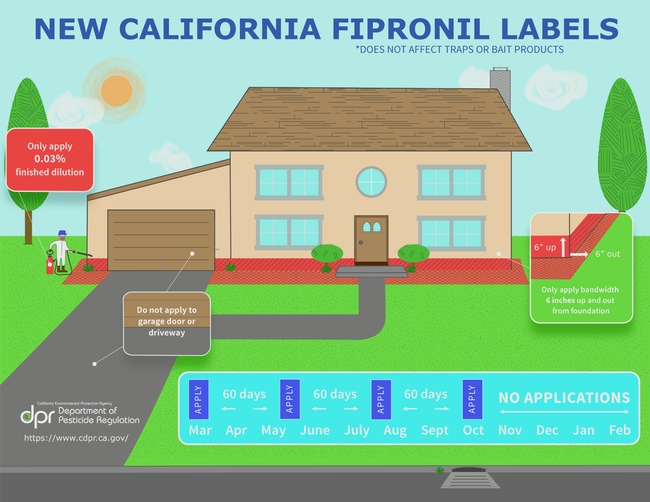
New label changes will alter how fipronil is applied by pest management professionals (PMPs) in urban environments, particularly between November and February, during California's typical rainy season.
Concerns over continued detections in urban watersheds of fipronil, a broad-spectrum insecticide commonly used against ants and other pests, led to the California Department of Pesticide Regulation (DPR) asking certain pesticide manufacturers to modify the labels of liquid formulations of fipronil to reduce negative impacts of this pesticide on the environment. These use restrictions apply to surface applications along foundation perimeters of structures.
Two nationwide changes to labels of liquid fipronil products were approved by the U.S Environmental Protection Agency (EPA) in April 2017, with the goal of keeping this active ingredient out of watersheds. These new restrictions are:
- Do not allow application to enter or runoff into storm drains, drainage ditches, gutters, or surface waters.
- Do not apply directly to sewers or drains, or to any area like a gutter where drainage to sewers, storm drains, water bodies, or aquatic habitats can occur, except as directed by this label.
Pre- or post-construction subsurface termite treatments and bait formulations are exempt from the new limitations.
California-specific label changes
In addition to these nationwide label amendments, there are some California-specific label changes. These came about through discussions among DPR, the Pest Control Operators of California (PCOC), the registrants of Termidor SC and Taurus SC, and the University of California, Riverside. The California-specific amended label was accepted by DPR in November 2017.
In California, surface applications of liquid fipronil products along foundation perimeters of structures will be further restricted as noted in Figure 2 and Table 1.

Research
UC Riverside considered these application restrictions in an applied research project and concluded that there were no significant effects on pest control efficacy for Argentine ants and that the runoff potential was low. During field efficacy trials conducted by PCOC using these new restrictions, there were no noticeable changes in callbacks observed.
Can I use products with the old label?
Containers with the revised label have been available in California since December 2017. According to California law, registrants can continue selling product with the old label until October 2019, which is 18 months after the US EPA's acceptance of the new label. Enforcement of product labels is based on the actual product label in hand. If an applicator legally obtained a product with the old label, then they can continue to use it under those label directions.
The new label restrictions for structural perimeter applications of liquid formulations are hoped to reduce the amount of fipronil detected in urban surface water systems.
Author - Associate Director for Urban & Community IPM/ Area Urban IPM Advisor
Attached Images:
